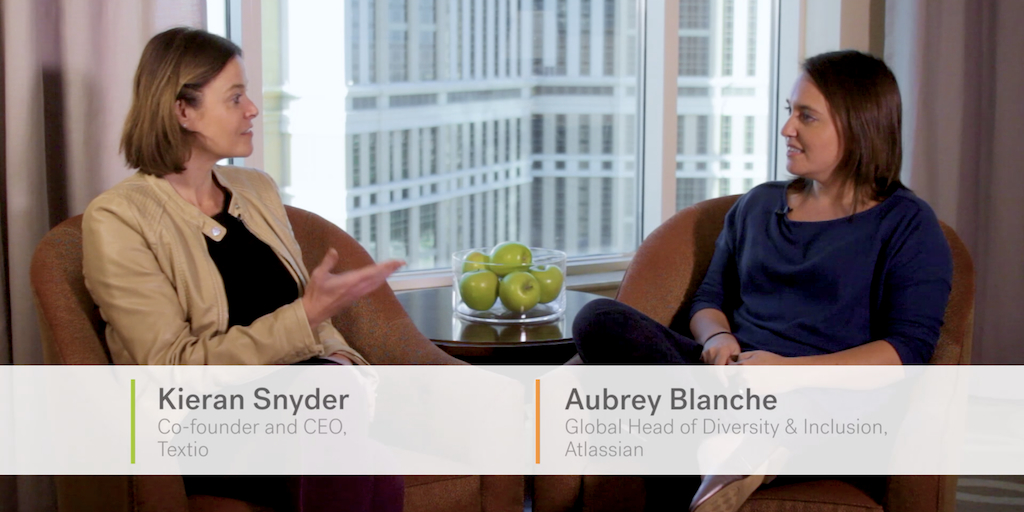How Atlassian went from 10% female technical graduates to 57% in two years

Atlassian’s Global Head of Diversity and Inclusion, Aubrey Blanche, sits down with Textio CEO Kieran Snyder for an in-depth look at how Atlassian employs data science in hiring for a more effective and inclusive workplace.
Video Transcript
Kieran Snyder: So you’ve been working in diversity and inclusion for a few years now, what do you see today as the biggest blocker for progress in diversity and inclusion, at tech companies or more broadly?
Aubrey Blanche: There’s this idea in the tech industry that tech is a meritocracy, and it’s just not based on any empirical data.
It also turns out there is this really great researcher at MIT, who has actually shown that espousing or believing this idea about meritocracy actually causes people to engage in more biased and discriminatory behavior.
This idea, when you look at the company, it’s really damaging because it gets in the way. Because when you say “We want to increase diversity,” the first answer is “Well we don’t want to lower the bar.” And my retort is always: “No, I’m asking you to raise your standards.”
It just gets at the same thing we always talk about—or what I tell people internally: diversity is a sign that you are hiring highly qualified people.
Kieran Snyder: So tell me just about one or two of the interventions that you’ve implemented
Aubrey Blanche: For us, a lot of what we do, if you’re looking at the hiring side, it’s just thinking about hiring our funnel as a system, and constantly checking in to see if the system is working the way that we think it is. A good example is when I came on board and we were really excited to hire more technical women into our graduate program in Sydney. We were like “This is gonna be great,” we changed the whole interview process we were ready to get these women in the pipeline. And we opened the role for two weeks and there were zero female applicants. It was terrible. And then we used Textio, real story. And also did some sort of specific sourcing and reaching out to women. But we never, all of those sort of process changes on the interview side wouldn’t have mattered if we hadn’t been following the data at each point.
Kieran Snyder: So you have a very impressive result…You’ve implemented textio, you have all these other great interventions, can you talk about what you’ve been able to achieve? It’s very special I think in the industry.
Aubrey Blanche: About 13% of technical degrees go to women in Australia. And of our starters just in Sydney — but it turns out the trend held for our U.S. class as well — 57% of our technical graduates that we brought in this year identified as women.
Kieran Snyder: Compared to where were you before?
Aubrey Blanche: About 10%.
Kieran Snyder: That’s spectacular!
Aubrey Blanche: So 2 years in, and our target was 25%.
Kieran Snyder: From kind of your inception and discovery and our working together, what have you been most excited about?
Aubrey Blanche: In Textio in particular I get really excited actually not about the job ad things which I’ve told you, but about the behavioral change.
Textio helps them write great job ads that help them fill roles, but it also gives them a really quick upscaling on the effect of language and positioning and branding that would be really hard to teach — or you could teach it in a seminar, but it probably wouldn’t be that interesting.
Kieran Snyder: It doesn’t stick the same way.
Aubrey Blanche: Yeah, and that’s the thing that’s been really cool for me because my recruiters primarily are using the tool, but I see in my hiring managers who are engaging with it the same type of transformation happening, which makes my job so much easier. Because I no longer have to get over the hump of convincing them that they need to do something different. They get it and they come to me with “But what else should I be doing?”